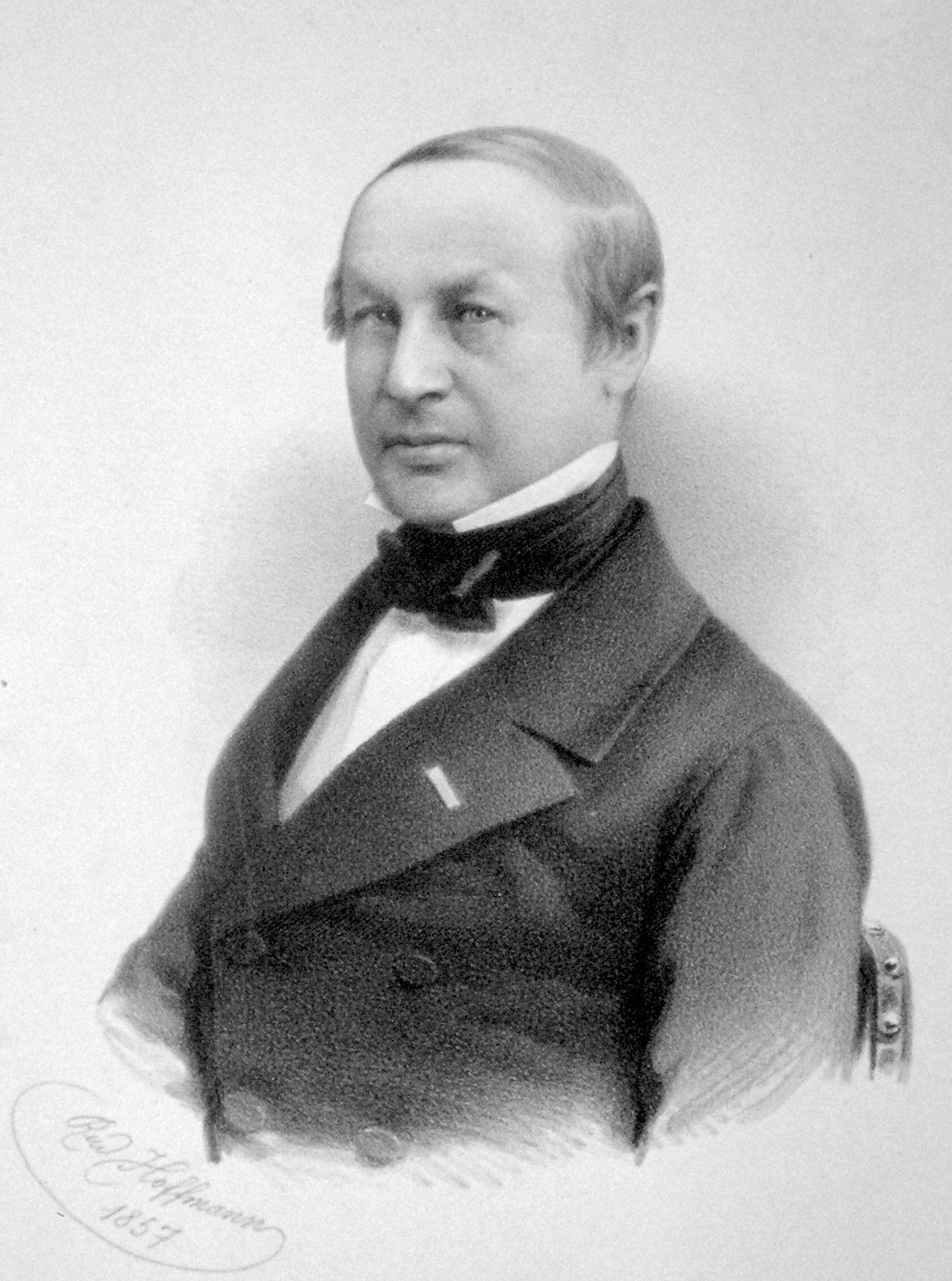
Theodor Schwann
Theodor Schwann (German pronunciation: [ˈteːodoːɐ̯ ˈʃvan];[1][2] 7 December 1810 – 11 January 1882) was a German physician and physiologist.[3] His most significant contribution to biology is considered to be the extension of cell theory to animals. Other contributions include the discovery of Schwann cells in the peripheral nervous system, the discovery and study of pepsin, the discovery of the organic nature of yeast,[4] and the invention of the term "metabolism".[5]
For the American Union Army officer, see Theodore Schwan.
Theodor Schwann
Early life and education
Theodor Schwann was born in Neuss on 7 December 1810 to Leonard Schwann and Elisabeth Rottels.[6] Leonard Schwann was a goldsmith and later a printer. Theodor Schwann studied at the Dreikönigsgymnasium (also known as the Tricoronatum or Three Kings School), a Jesuit school in Cologne.[6][7] Schwann was a devout Roman Catholic. In Cologne his religious instructor Wilhelm Smets, a priest and novelist, emphasized the individuality of the human soul and the importance of free will.[8]: 643 [6][7]
In 1829, Schwann enrolled at the University of Bonn in the premedical curriculum. He received a bachelor of philosophy in 1831.[9] While at Bonn, Schwann met and worked with physiologist Johannes Peter Müller.[3] Müller is considered to have founded scientific medicine in Germany, publishing his Handbuch der Physiologie des Menschen für Vorlesungen in 1837–1840.[10]: 387 It was translated into English as Elements of Physiology in 1837–1843 and became the leading physiology textbook of the 1800s.[6]
In 1831, Schwann moved to the University of Würzburg for clinical training in medicine.[7][11] In 1833, he went to the University of Berlin, where Müller was now Professor of Anatomy and Physiology.[7] Schwann graduated with an M.D. degree in medicine from the University of Berlin in 1834. He did his thesis work in 1833–1834, with Müller as his advisor. Schwann's thesis involved a careful study of the necessity for oxygen during the embryonic development of the chicken. To carry it out, he designed and built an apparatus that enabled him to pump the gases oxygen and hydrogen out of the incubation chamber at specific times. This enabled him to establish the critical period in which the eggs needed oxygen.[12]: 60
Schwann passed the state examination to practice medicine in the summer of 1834, but he chose to continue to work with Müller, doing research rather than practicing medicine.[11] He could afford to do so, at least in the short term, because of a family inheritance.[12]: 60 His salary as an assistant was only 120 taler. For the next five years, Schwann would pay the other three-quarters of his expenses out of his inheritance. As a long-term strategy, it was not sustainable.[12]: 86